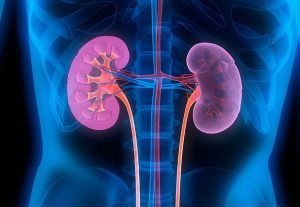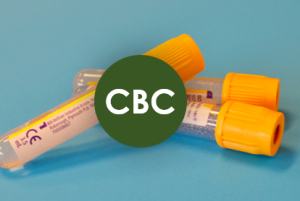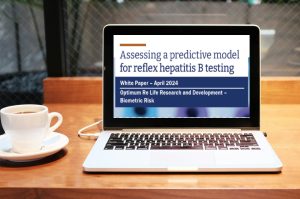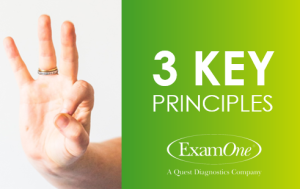As some in our insurance industry look to supplement laboratory testing with other forms of applicant information or attempt to save costs by eliminating laboratory testing completely from the underwriting process, other companies are concerned about the potential increased mortality risk and unsure what the right mix is for them. We understand this dilemma.
Our analytics and professional services teams are currently working very closely with carriers to analyze their applicant populations and design specific solutions to meet their objectives.
If your company is considering optimizing your laboratory testing in your underwriting process, here are three things to consider:
- How will we protect against applicant fraud?
A portion of applicants deny their tobacco use during the application process. Through cotinine testing, we can confirm 20% of applicants do test positive for tobacco. By removing the laboratory testing portion, you run the risk of seeing a high percentage of your applicants suffer from “smoker’s amnesia” which becomes a moral hazard risk to the carrier. When you know how your applicant population compares to your peers in terms of cotinine positivity as well as non-disclosure rates, you can more accurately design your product and minimize unnecessary risk.
- How will we protect against applicant non-disclosure (even unintentional) of their medical history?
Applicant non-disclosure of their medical history may be due to an undiagnosed disease risk or from an inability to recall a previously diagnosed disease. Medical history non-disclosure for pre-diabetes and heart failure can be over 90%. Diabetes non-disclosure is higher than 40% while hypertension non-disclosure is greater than 56%. This information asymmetry can increase future mortality risk without a paramedical examination that captures an applicant’s physical measurements and laboratory testing.
- How high is the mortality impact of diabetes and how will we price it?
We are the first laboratory in the insurance industry to incorporate A1c testing into our standard insurance profile. According to the American Diabetes Association, there were 29.1 million Americans in 2012 with diabetes – 8.1 million of those cases were undiagnosed. Routine A1c screening is considered to be the “gold standard” in diabetes testing and allows insurers to identify applicants with diabetes and pre-diabetes. For a full analysis on the mortality impact of diabetes, please see the recent study published by MIB.
We are committed to helping you know your business’ mortality risk.To have a risk analysis performed on your business, please complete this request form. Our Professional Services team will contact you to schedule a time to discuss next steps.




















As some in our insurance industry look to supplement laboratory testing with other forms of applicant information or attempt to save costs by eliminating laboratory testing completely from the underwriting process, other companies are concerned about the potential increased mortality risk and unsure what the right mix is for them. We understand this dilemma.
Our analytics and professional services teams are currently working very closely with carriers to analyze their applicant populations and design specific solutions to meet their objectives.
If your company is considering optimizing your laboratory testing in your underwriting process, here are three things to consider:
A portion of applicants deny their tobacco use during the application process. Through cotinine testing, we can confirm 20% of applicants do test positive for tobacco. By removing the laboratory testing portion, you run the risk of seeing a high percentage of your applicants suffer from “smoker’s amnesia” which becomes a moral hazard risk to the carrier. When you know how your applicant population compares to your peers in terms of cotinine positivity as well as non-disclosure rates, you can more accurately design your product and minimize unnecessary risk.
Applicant non-disclosure of their medical history may be due to an undiagnosed disease risk or from an inability to recall a previously diagnosed disease. Medical history non-disclosure for pre-diabetes and heart failure can be over 90%. Diabetes non-disclosure is higher than 40% while hypertension non-disclosure is greater than 56%. This information asymmetry can increase future mortality risk without a paramedical examination that captures an applicant’s physical measurements and laboratory testing.
We are the first laboratory in the insurance industry to incorporate A1c testing into our standard insurance profile. According to the American Diabetes Association, there were 29.1 million Americans in 2012 with diabetes – 8.1 million of those cases were undiagnosed. Routine A1c screening is considered to be the “gold standard” in diabetes testing and allows insurers to identify applicants with diabetes and pre-diabetes. For a full analysis on the mortality impact of diabetes, please see the recent study published by MIB.
We are committed to helping you know your business’ mortality risk.To have a risk analysis performed on your business, please complete this request form. Our Professional Services team will contact you to schedule a time to discuss next steps.